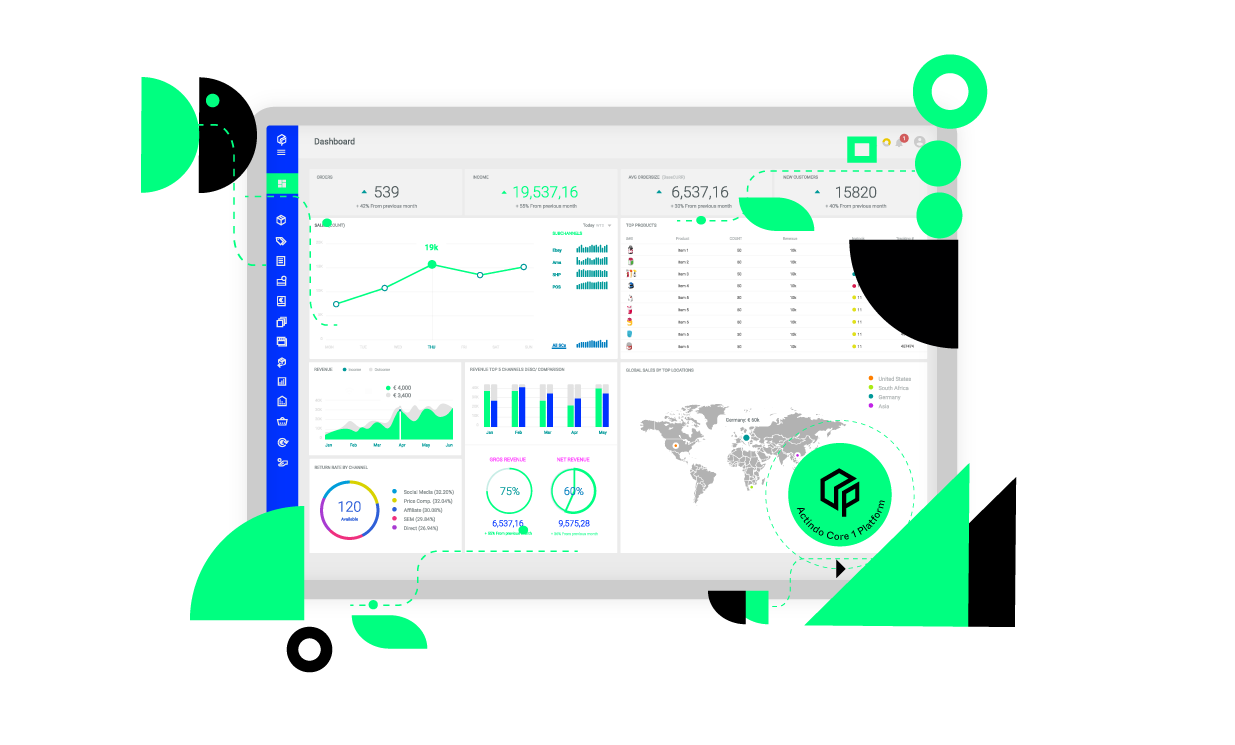Social commerce is set to hit a staggering $1.2 trillion in worldwide sales by 2025. Platforms like TikTok and Instagram are where many consumers now go to find compelling products and buy them. Which is an exciting opportunity for brands and retailers...
... yet it’s also a significant operational challenge, because customers still expect prompt delivery, flawless communication and smooth returns. Which puts extra pressure on already-tight profit margins.
How can these challenges be fully met? In our recent guide to social commerce, we looked at the main benefits and challenges, and how a composable architecture can help.
Now, let's take a closer look at how Actindo can orchestrate it all, so that retailers can plan better, sell more and waste less. And consumers can buy, receive and return the products they want, wherever they want. The era of omnichannel commerce is already here.
Introducing Actindo: Platform Overview
Actindo provides end-to-end business process agility, including connection to external microservices, and superior order management and fulfilment capabilities. It adds a central datahub for ultimate accuracy, plus a MACH-certified integrations fabric for adding composable components and microservices.
Put this all together, and retailers can get a complete overview of their operations processes. Increase order processing capacity by over 100%. Reduce picking time to less than 180 seconds. And place the goods in a customer’s hands within 23hrs:
The Actindo platform can be integrated into any legacy or greenfield scenario in as little as nine weeks, thanks to its use of low-code, MACH-certified composable commerce technology. So the return on investment for customers is measured in months, not years.
Let’s look at three key use cases of the platform for social commerce...
Use Case #1: Order Management From Any Channel
Distributed order management has been described as the “heart of omnichannel commerce”. It uses logic-based rules to capture and fulfil customer orders as quickly and reliably as possible, at the lowest possible cost.
Within the Actindo platform, brands and retailers can get a complete overview of all orders from any connected sales channel, including social media platforms like Instagram, TikTok and Facebook:
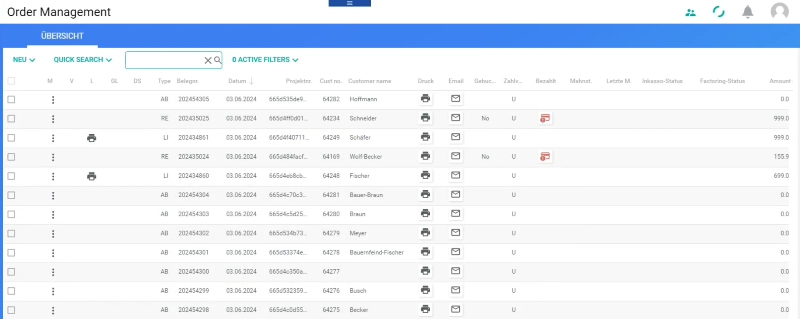
For example, it's possible to see if a customer has placed multiple orders, via multiple channels, and get a complete overview of that customer’s profile and purchase history.
We can see information on the order status, such as whether it has been shipped yet or not. We can see if the order has been paid for or not , and have a fully unified overview of all the buyer’s information.
If necessary, it’s possible to adjust information – for example, if the customer calls and says, “Hey, I placed my order on TikTok, but accidentally put in the wrong address.”
When an order is processed through the system, the correct information has to be available in the right place at the right time, and all of this is handled with Actindo’s workflows management tool.
This enables users to create a blueprint of the process - how an order is supposed to behave within the system, and at which point in time.
It’s possible to check details related to warehouse operations - for example if it is a domestic shipment or is it an international shipment - and route the order correctly.
And here’s what Actindo can do: for every order itself, a process is created which shows in detail which path has been taken, and at which point in time.
So it allows huge transparency on where the order currently is in the process, and if a customer calls customer support, they can easily check on the order status with a couple of clicks.
Use Case #2: Serve All Product Data Anywhere
In the second use case, Actindo’s product information management (PIM) tool is where brands and retailers can centrally store all images and product data, so that it can be pushed out to any channel, including social media.
This central “system of record” enables users to harmonize their omnichannel operations across any social commerce channel, and is a powerful element of the Actindo platform.
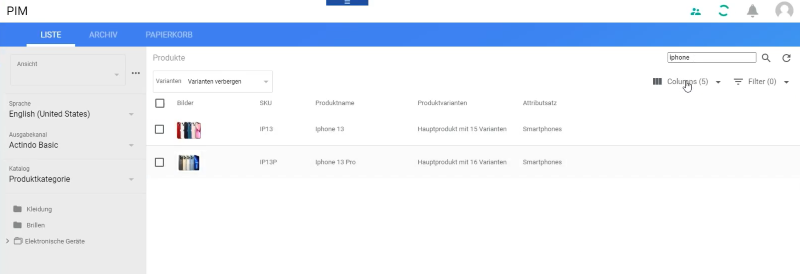
For example, it’s possible to upload a product to the TikTok shop or Instagram straight out of the Actindo platform, and easily create multiple offers on different channels.
Use Case #3: Automate Business Processes with Agile Workflows
In our third use case for Actindo, let’s look at some common scenarios that can be an operational challenge for brands and retailers, especially around social commerce.
Maybe we want to launch a Black Friday sale on Instagram to quickly shift lots of stock. Or perhaps we want to ensure that any stock gaps in one warehouse are automatically covered by the system, which dispatches secondary stock from another warehouse.
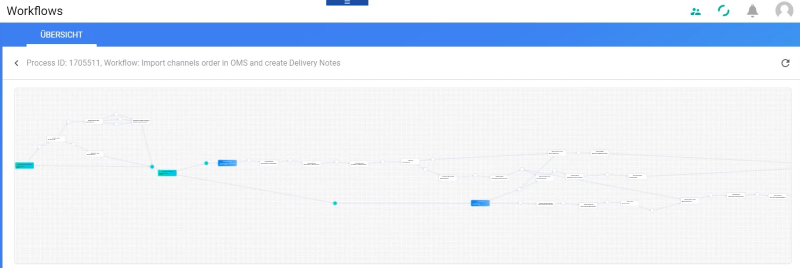
All of this can easily be done in Actindo by creating new workflow paths, based on if/then rules, as shown above. This might be defined as follows:
If our stock in the domestic dispatch warehouse can’t fully cover orders anymore, then use the secondary warehouse to serve the customer and deliver his goods on the same day.
By leveraging these workflow paths, Actindo can unify all of the processes and make sure a user has a complete overview of all orders from all of the customers' touch points.
It gives brands and retailers the flexibility to integrate all kinds of processes they might want to implement with their backend systems, and specifically for social commerce.
If certain events are coming up, it enables users to create a specific rule that checks orders coming through social channels, check the inventory, and specify where to dispatch from.
This means that Actindo sits in the middle of the process, and orchestrates the different technologies in place to do digital commerce or omnichannel commerce:
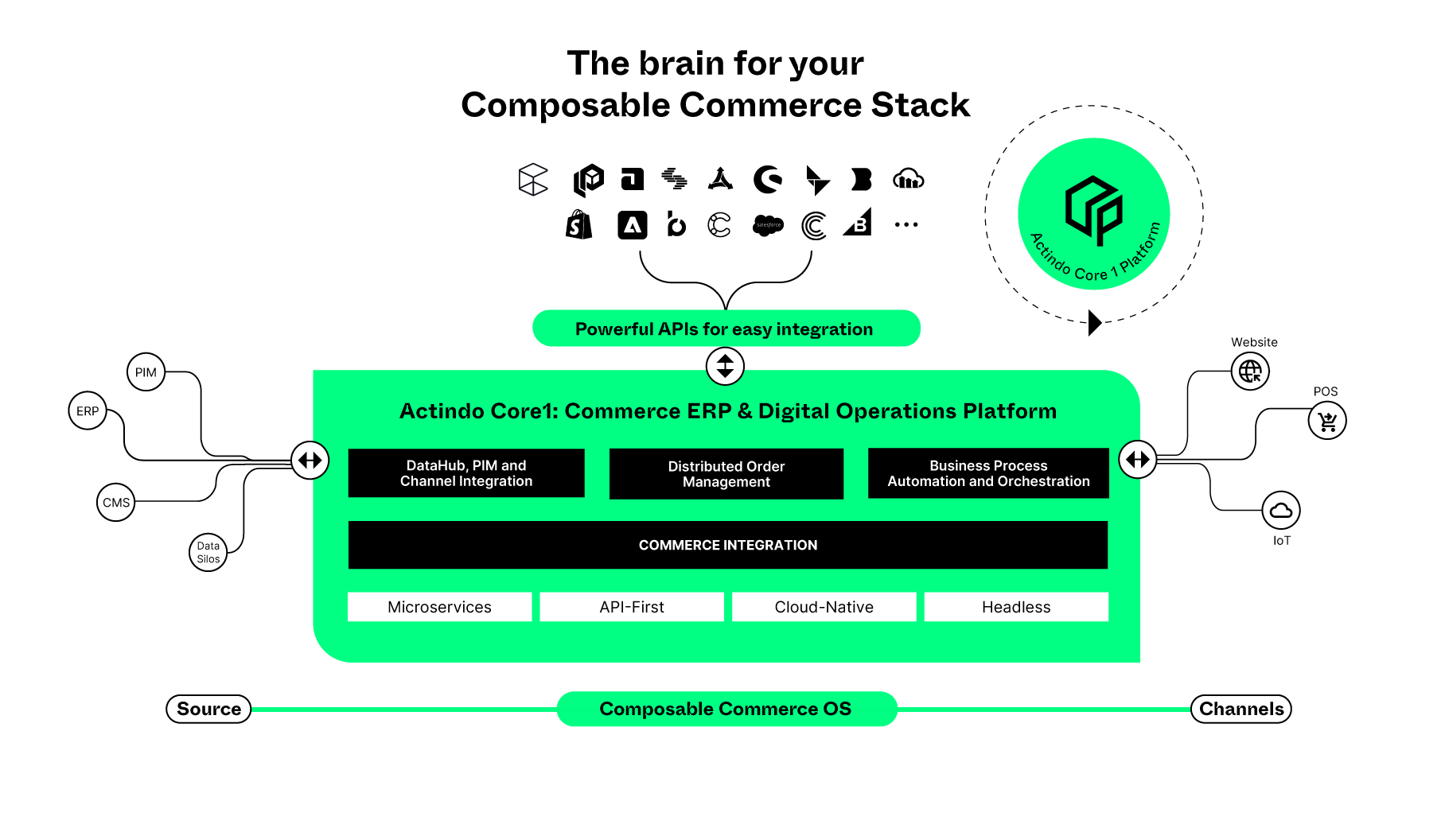
On the left side of the graphic above are all the systems where data comes in from your product information management system and ERP, for example, into Actindo. And we can then define all the different channels, including social commerce, we want to manage.
Actindo has the flexibility to control all the processes that might be needed, which is why we call this the commerce integration layer. And as a member of the MACH Alliance, the Actindo platform is Microservices-based, API-first, Cloud-native and Headless.
This enables Actindo to leverage business process automations that make it simple for brands and retailers to add another channel and come up with specific rules on how to manage that channel when it comes to orders, logistics and fulfilment.
Success Story: How Kapten & Son Controls All Sales Channels
For brands venturing into social commerce, managing multiple channels, inventory, and orders can be a Herculean task. In a world where social channels are becoming the new storefronts, being equipped with the right tools is not just an advantage—it's a necessity.
Which is why renowned lifestyle brand Kapten & Son chose Actindo Core1 to connect their social commerce and influencer marketing activities, maintain real-time inventory accuracy and process orders efficiently across all channels:
All business processes are automated, orchestrated and customized with just a few clicks, and all data streams are consolidated and can be viewed in real time, so that the Kapten & Son operations team can work together collaboratively to make informed decisions.
After deploying Actindo Core1, Kapten & Son saw a 23% increase in customer care team productivity and streamlined their order processing, setting a new standard for operational efficiency in social commerce.
Read the success story here.
How to Get Started with Social Commerce
Retailers, brands and manufacturers shouldn’t underestimate the power of social media and the “Infinite Loop” for a successful post-purchase experience, especially with younger consumers.

Platforms like Instagram and TikTok offer a unique opportunity to engage customers post-purchase, personalize their experience and ultimately build brand loyalty.
Composable commerce plays a central role in this, as it provides companies with the flexibility and scalability needed to quickly adapt to ever-changing customer needs and market trends.
A powerful e-commerce platform like Actindo Core1 is the ideal foundation to effectively address these challenges and create cohesive post-purchase experiences. Find out more:
>> Book a Demo <<
